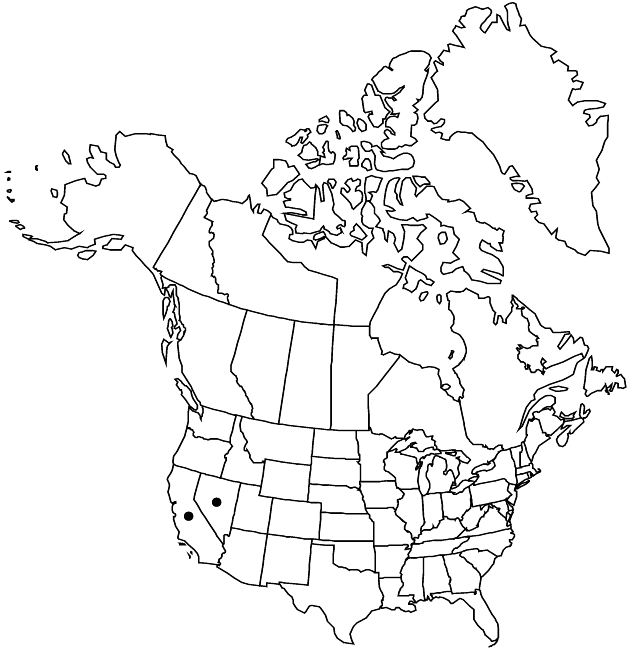Ericameria parryi var. monocephala
Phytologia 75: 89. 1993.
Common names: One-headed rabbitbrush
EndemicConservation concern
Basionym: Chrysothamnus monocephalus A. Nelson & P. B. Kennedy Proc. Biol. Soc. Wash. 19: 39. 1906
Synonyms: Chrysothamnus parryi subsp. monocephalus (A. Nelson & P. B. Kennedy) H. M. Hall & Clements
Plants 5–40 cm (rigid). Leaves crowded, grayish; blades mostly 1-nerved, linear, 10–30 × 0.5–1.5 mm, faces sparsely to densely tomentulose, viscidulous; distalmost overtopping arrays. Heads 1–2 (–4) at branch tips. Involucres 10–11 mm. Phyllaries 8–12, thinly chartaceous, apices erect to spreading, attenuate. Florets 5–7; corollas 8–9 mm, tubes sparsely strigose, throats gradually dilated, lobes 1.5–1.8 mm. 2n = 18.
Phenology: Flowering late summer–fall.
Habitat: Open subalpine forests, talus, and alpine barrens
Elevation: 2800–3700 m
Discussion
Of conservation concern.
Variety monocephala is known from the Sierra Nevada.
Selected References
None.
Lower Taxa
None.
"fine" is not a number.
... more about "Ericameria parryi var. monocephala"
resinous +
tomentose +
introrse +
connate +
distinct +
herbaceous +
attenuate +
scarious +
hirsute +
papillate +
fascicles +
absent +
continuous +
decurrent +
1-nerved +
linear;spatulate +
ribbed +
stigmatic +
barbellate +
persistent +
20;60 +
subequal +
absent +
One-headed rabbitbrush +
yellow +
absent +
monomorphic +
5-12-ribbed +
dimorphic +
sericeous +
3mm;8mm +
staminate +
straight +
viscid +
gland-dotted;yellowish;greenish;yellowish;greenish;gray +
tomentulose +
distinct +
proximal +
5;7 +
bisexual +
dispersed +
indeterminate +
1;2 +
surrounding +
subcylindric +
crowded +
grayish +
cauline +
erect;spreading or reflexed +
? (?) +
evident +
herbaceous-tipped +
herbaceous +
chartaceous +
2-carpellate +
inferior +
attached +
anatropous +
persistent +
falling +
tough +
thick +
absent +
connate +
herbaceous-tipped +
persistent +
distinct +
falling +
chartaceous +
subequal +
Phytologia +
1993 +
pistillate +
absent +
fertile +
epaleate +
pitted +
convex +
fibrous +
exalbuminous +
modifed +
3;6 +
alternate +
resinous +
prostrate +
tomentose +
2-branched +
glabrous +
Ericameria parryi var. monocephala +
Ericameria parryi +
variety +
dilated +
shorter +
strigose +
